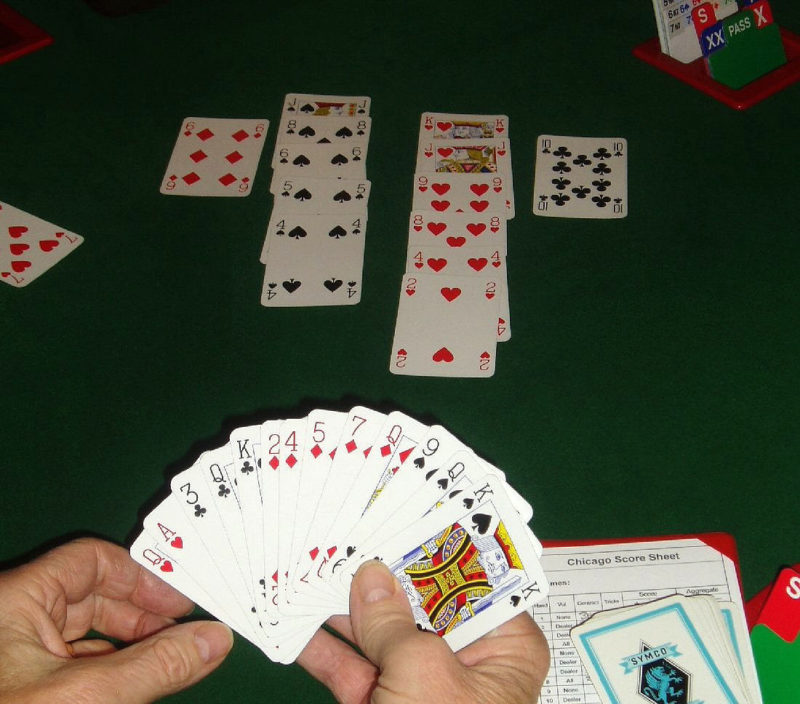It almost doesn’t matter what type of sport I’m talking about, there are always two ways to play it: On the attack, or on the defence.

The same is true for football, 8-ball, cricket, and for bridge. One could substitute any other sport or mindsport, and I think that the sentence would still have some truth.
Have you got the type of hand (or the type of mood) that means an attacking game approach is best?
It’s an aggressive strategy, but has its place, and it’s won many legendary games. Under the right circumstances, it might even win you a few.
Here are 5 strategies for attacking tricks.
1. Play your highest (for theirs)
Play your highest card, and win the earlier tricks to cement your place in the trick-count. Sometimes this works, and sometimes this does not – and you’ll have to examine the rest of your hand to know how it might play further.
If an opponent tries to beat this move, they have to play a card higher than yours if they have it.
Once they’ve played this particular card into the trick, they no longer have it in their partnership. Decide if this is an advantage for your game right now, and attack ahead.
2. Switch suits (to your advantage)
There’s a point in many bridge games where someone runs out of a suit, and it’s time to start digging through your dirty laundry for a good trick.
When you see a good opportunity to switch suits when your opponent is out, do it. Then play your appropriate cards while your opponent is well stuck with theirs until something in the hand gives them a gap to win tricks again.
Switching suits is a great, though slightly aggressive tactic to get to more tricks.
3. Shed your lowest (& see)
Do you have a card or two in your hand that’s just sitting there in the lowest denomination, pretty useless? Well, play it, and see what happens. Once you’ve played one of your lowest cards, your opponent will usually counter with one higher than yours – and that’s just habit.
Now you have a clearer idea of their high-cards.
Use it.
4. Play into their gaps
Artists call it empty space, and it’s used by many painters and musicians. It’s the silence between notes, and the shadows that fill in shapes – and it’s what you see when you look beyond the foreground. Look it up from here, it’s useful information to know.
What does this have to do with your bridge hand?
Look at your opponents and their empty space.
And then, like I’ve mentioned earlier, use it.
5. Play off your partner
Empty space isn’t just for your opponents and their hand. Imagine what it means to your partnership’s hand as a whole.
If your opponents don’t appear to have played the card (and you certainly haven’t), then your partner might be the one with the good hand in the game. Always consider what your partner has before you worry too much about what your own hand has.
Remember: Between the two of you, you have 26 cards. Some of them have got to be good.
